The most economical heating of a private house and apartment. Heating a house with electricity: the most economical way, some tips
Every owner wants to wisely manage the budget for construction and home improvement. This means spending as little money as possible to get the desired result. In relation to our topic - to make heating in your home cheap, but at the same time not to lose either warmth or reliability. What can you save on and get the most for the least money? Let's try to figure it out.
Cheap heating: We save on the purchase of equipment
A significant portion of the cost heating system make up equipment, additional components and Consumables . You can purchase equipment from expensive luxury brands to very cheap unbranded equipment from an unknown Chinese manufacturer. The main thing is to be aware of the level to which it makes sense to save without sacrificing reliability and safety.
Example 1: One of the cheapest brands of heating boilers is Russian AKGV. Prices for these boilers start from 10 thousand rubles. However, when buying the lowest cost boilers of this brand, you must keep in mind that, firstly, expansion tank and the pump may not be included in the kit, and you will have to pay for them separately. And, secondly, they may have relatively large heat losses.
We recommend choosing more expensive boilers of this brand that have better equipment. Or consider options from other brands. For example, Baxi boilers have much lower heat losses due to the features of the boiler design, and are equipped with necessary equipment and built-in automation, which provides additional savings on maintenance.
Example 2: many people prefer to buy equipment, including boiler equipment, at markets. Indeed, prices there are usually lower than in specialized stores. However, official installation companies most likely will not undertake to install such a boiler at all - they prefer to work only with official representatives of manufacturers. And if you hire a couple of “specialists” in the same market, you will have to bear all the risks. At the same time, when ordering the services of a certified company for the purchase and installation of equipment, you pay more, but you don’t have to worry. You will be provided with a guarantee both for the equipment and for the products produced. installation work. And besides, if you wish, they will take the system under a maintenance contract.
Another source of savings is hunting for special offers and sales. This method is especially effective for the most expensive components (for example, a heating boiler). But there is no guarantee that when you go shopping for your heating, this tempting offer will be waiting for you. If you are willing to put aside equipment at home to save money, this method is for you.
Finally, you can bargain. To do this consciously, you can try to estimate what the difference is between the seller's input and selling prices, and try to reduce it in your favor.
Pipes, radiators and other components
 The most inexpensive system for laying pipes from the boiler to the heating devices is single-pipe(the pipe goes in a circle and returns to the boiler).
The most inexpensive system for laying pipes from the boiler to the heating devices is single-pipe(the pipe goes in a circle and returns to the boiler).
Cheapness is achieved simply - due to the footage of the pipes themselves, which is accordingly two times shorter than with two-pipe system. However, the quality of heating may decrease - for example, the “farthest” battery will be colder than the others (). For laying pipes it is advisable to use propylene- one of the most economical and at the same time reliable materials.
From heating batteries, for country houses with them not so much high pressure in the system, and controlled water quality, is usually suitable a large number of types of radiators. You can choose both by style and price. Speaking of economy class, aluminum and steel radiators usually noticeably cheaper than their bimetallic “brothers” (from 280-300 rubles per section), and at the same time they are in no way inferior to them in appearance ().
cheap home heating: Saving on installation work
Typically, installation costs are calculated as 30-50% of the cost of installed equipment. Therefore, your costs will be partly determined by the amount of previous expenses.
It’s quite difficult to come up with something else to install heating cheaply. You can hire a company with a reputation and market average prices, and then sleep peacefully. You can hire a cheaper company and turn a blind eye to some flaws in the work. Or you can hire a group of guest workers who, upon completion of work, will disappear from your field of vision, and that’s it hidden defects work will be entirely at your own risk. Sometimes with rather unpleasant financial consequences. Thus, one of the popular orders from our company is the service « − which often includes correcting other people’s defects.
Home to help
Another way to save on your heating system is insulate the house so as to minimize heat loss. This will reduce the required power of the heating system, and, therefore, the cost of components. The main thing is not to forget that insulating a house will also require costs, and compare these costs with savings on heating, so as not to overpay, but for another system.
conclusions
To figure out exactly how you should (or shouldn't) save money, the best way to do this is to use company council, which will build your heating system. And if you are not sure of their objectivity, hire a third-party specialist for consultation for a one-time fee.
Owners of private houses various reasons choose heating using electricity. Unfortunately, of all existing methods, it is considered the most expensive. Therefore, the question of how to reduce the cost of heating a house with electricity is more relevant than ever. Most economical way Let's take a closer look and compare some types of heating systems.
Often houses built on private plots are not connected to energy networks: gas, solid fuel. In such cases, organizing heating using electricity becomes the only option.
For example, many people install all kinds of heaters and stoves in the house if the main system is not yet working. Do such methods have obvious advantages and significant disadvantages? Let's look at this in more detail.
Heating private houses with electricity: undeniable advantages
- Easy to install electric heat sources.
- The ability to quickly adjust the temperature to the desired level.
- Saving energy consumption.
- Mobility of heating sources (in the case of using mobile radiators).
- Possibility to choose the type of convector to match the interior of the house.
- Environmentally friendly - oxygen is not removed (not burned) from the room space, there is no danger of harmful emissions.
Disadvantages of heating from the mains
- The high cost of electricity services.
- If it is necessary to create high voltage, you will need to purchase and install an energy distributor.
Note! As you can see, the disadvantages of this method less than advantages, and all of them are associated with financial expenses.
But if there is simply no other way out, for example, there are no connections to areas remote from the city limits centralized networks, then organizing heating using electricity becomes an indispensable option!
Related article:
Currently, the production technology of electric heaters is expanding and improving, resulting in the emergence of a new generation of economical electric heaters. We'll talk about them in this review.
Types of electric heating in a private house
Most often, the need for a heating system using electricity arises in private homes.
The latest systems for this type of room heating differ in:
- operating principles;
- sizes;
- species
What’s interesting is that not every one of them requires a lot of electricity! Let's figure out how to heat houses with electricity cheaply.
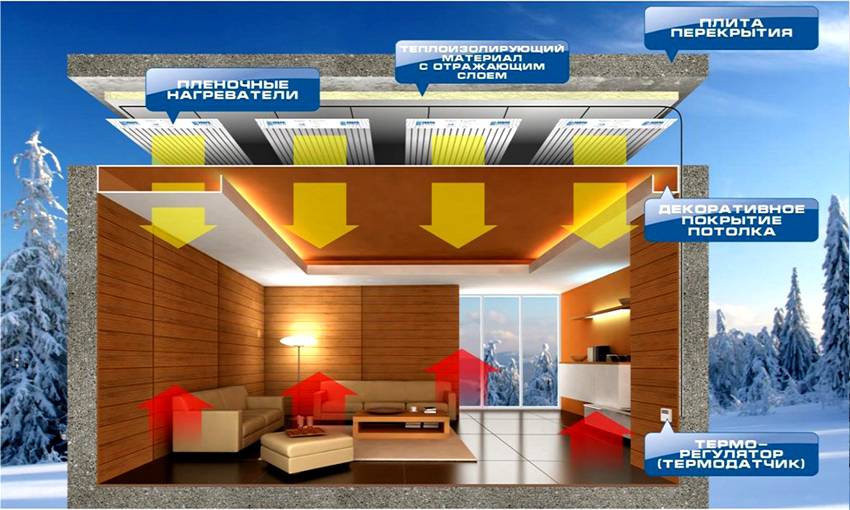
Water heating and electric boiler
It's familiar heating circuit, through which water runs, acting as a heat carrier. However, heating of the liquid in the circuit is started by an electric boiler for heating a 220V house.

Hence certain features of the equipment:
- The system should only be closed.
- A membrane expansion tank is required for uniform heating of the house.
- Needed from time to time forced circulation water in the circuit to reduce electrical energy costs.
The operation of this system is impossible without the use of a boiler, which comes in 3 types:
With heating element
The heating element operates on liquid - conductor electric current heats up from the resistor. For such devices it is necessary to additionally purchase waterproof and insulated protection, which, unfortunately, negatively affects the power of the structure.

On average, the productivity of boilers with heating elements ranges from 3 to 50 kilowatts. At the same time, low-power varieties operate stably from a single-phase network, but powerful ones will require three phases. Appearance of such boilers depends on the layout of the heating elements.
Characteristics:
- The undoubted advantages of the device include its low cost.
- But it is directly related to the inability to save electricity, while the heating element itself is not capable of long service.
- Due to constant use, salts are deposited on the heating element, which prevent its stable operation and then contribute to its breakdown, which contributes to frequent replacement of the part.
Note! If there is little water in the equipment, the heater will fail very quickly, so the liquid level must be constantly monitored.
Customer reviews:
Miroslav, Perm. Purchase – Protherm 12 K boiler: “At first, a friend bought such a boiler and was pleased with it, so I bought an already proven model. It's been installed for 2 years and works flawlessly. However, I do not recommend buying a boiler without a Thermolink-S regulator, because the device will not work economically. I bought it separately, installed it, and the advantages of the boiler increased significantly with it.”
Pros: small in size, fits perfectly into the interior of the house.
Flaws: slightly noisy when running.
Elena, Moscow. Purchase – boiler Protherm SKAT 24: I’m very pleased with the device, but it’s not clear why in Russia our manufacturers don’t make boilers like this excellent quality. And Protherm, roughly speaking, bought it and forgot it – it doesn’t cause any problems at all!
Pros: copper heating elements in the design, which instantly increases the quality and service life of the device. I like the soft start - the device heats up with a delay, which, I think, also affects how long it will work without interruption. The boiler has its own circulation pump apparatus, which is almost inaudible in operation. You can also turn on all the heating elements at once so that heating occurs faster.
Minuses: behind European quality you have to pay, so the price is high. You also need to connect the device if there is one that protects against power surges, otherwise the boiler will not be accepted under warranty if something happens.
With electrode functioning system
The system is very different from the previous scheme. Thus, heat is generated due to frequency fluctuations in alternating networks - they cause ionic vibrations in the electrolyte, which because of this heats up.
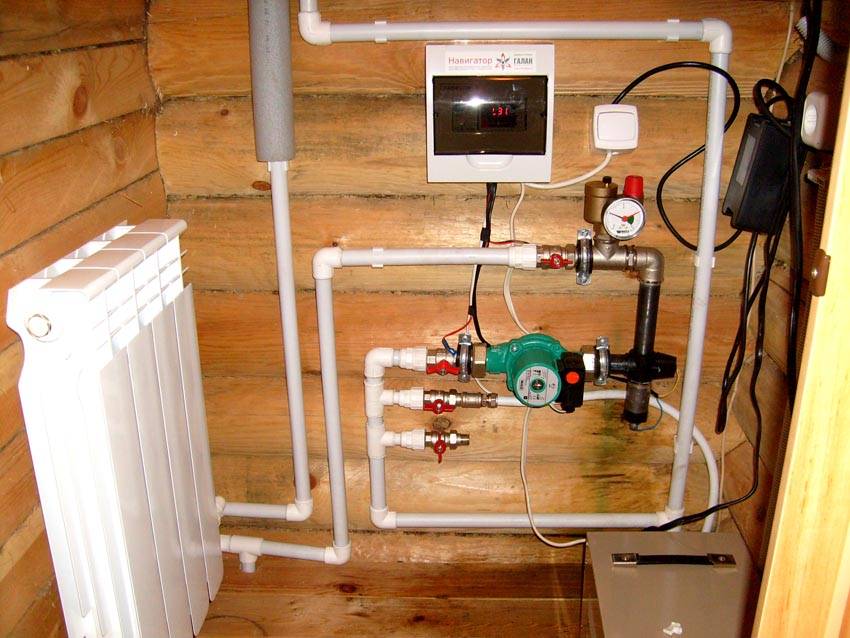
A boiler is essentially a body and 2 electrodes located in a coolant - electrolyte or conductive liquid. Regular antifreeze can act as this coolant.
Advantages:
- Such devices are compact.
- Light in weight, affordable, but have high heating power. They can be grouped, included only one or all at once.
- And one of its main advantages is resistance to voltage surges, which is especially important for houses with old wiring.
But at the same time, the electrode system has disadvantages:
- unstable power level;
- extreme dependence on the composition of the conductive substance and its temperature;
- requires strict adherence to the proportions of the solution and its purity;
- incorrect “reaction” to adjustment and automatic control.
Russian electrode boilers for heating a private home, price range:
| Models "Galan Hearth" | power, kWt | Cost, rub. |
|---|---|---|
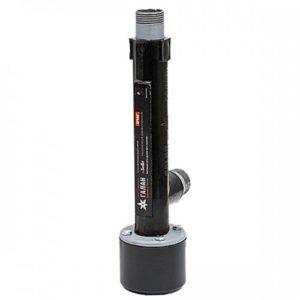 2-N 2-N | 2 | 3650 |
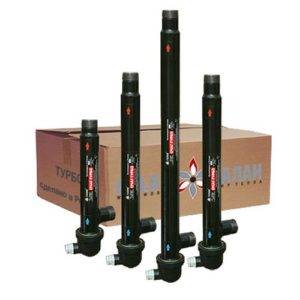 3-N 3-N | 3 | 3800 |
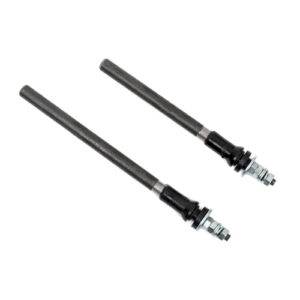 5-N 5-N | 5 | 3850 |
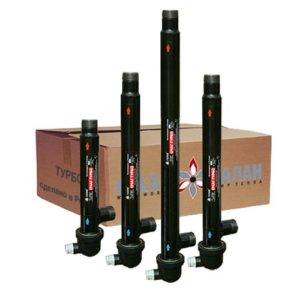 6-N 6-N | 6 | 3900 |
| Models "Galan" | Cost, rub. |
|---|---|
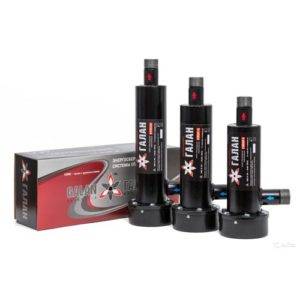 Geyser-9 Geyser-9 | 7200 |
 Geyser-15 Geyser-15 | 7500 |
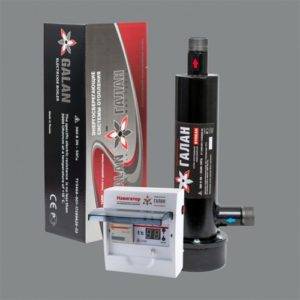 Vulcan-25 Vulcan-25 | 7550 |
 Vulcan-36 Vulcan-36 | 10200 |
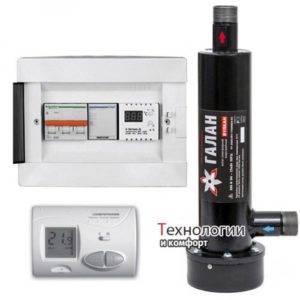 Vulcan-50 Vulcan-50 | 12300 |
User reviews about electrode boilers:
Sergey, Perm: Each heating season requires new electrodes, which is considered a very labor-intensive task. The manufacturer assures that if you follow all performance characteristics, then the device will last a long time.
Natalia, Riga: I purchased the Vulcan-25 model. We are often forced to disassemble the boiler and clean it. If the plates are not cleaned in a timely manner, the thermal conductivity decreases. The manufacturer recommends that you first pay attention to the quality of the coolant.
Pavel, Ekaterinburg: Huge costs for electrical energy, according to our capabilities. It is necessary to constantly maintain the recommended temperature and check for heat leaks from the house.
Induction heating boilers
If the question arises of how to heat a house economically with electricity, then this is one of the optimal options. Today this is the most popular and technically advanced type of electric boiler.
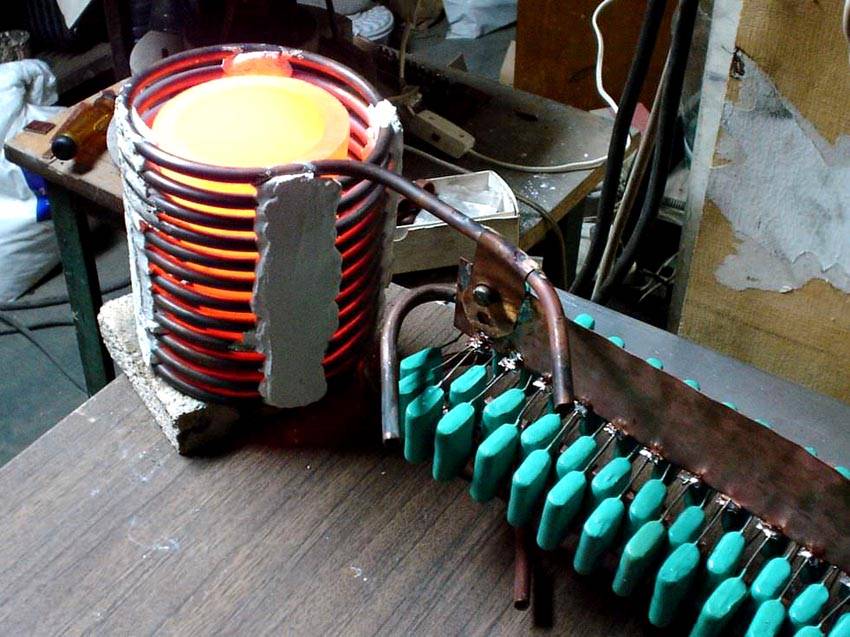
It works like this: a primary winding is installed in the center of the device, capable of passing an electric current, which provokes voltage in the secondary winding section. It, in turn, consists of a circuit of pipes with coolant. Due to the fact that there are no vulnerable components in such a device, the electrical conductors do not come into contact with the heat-conducting medium in any way.
An induction boiler can operate stably for several decades! This is an economical device - with its help you can reduce energy costs by up to 40%, when compared with a heating element or electrode “brother”.
Note! The device has only three drawbacks - noise from slight vibration, the massiveness of the structure itself and its relatively high price.
Simple electric boilers for heating private houses: average prices
Heating a house with electricity: the most economical way is infrared
Along with the boiler heating system, the infrared method is especially popular today. Special heater plates are installed in the house, in which the emitter draws in electricity and converts it into an infrared wave, and then transmits it. The waves from the heater are in continuous motion until they “collide” with some opaque object.

The plates are usually mounted on the ceiling or walls. However, it should be understood that it rarely acts as the main heating system for a large private house and is more often used as an addition.
Infrared waves quickly fill the room with heat and then turn off automatically - this is possible thanks to a special independent system automatic control.
Note! This type of home heating with electricity is the most economical method, since it does not consume more electricity than necessary.
This option has only 2 disadvantages:
- Expensive equipment (but at the same time it is energy efficient!).
- Strict direction of heating from the plates to the nearest areas of the room.
Convector heaters
These heating devices are similar in function to conventional radiators - convectors heat themselves and transfer heat through the air. However, there is no coolant inside them, so pipes are not required for them. Instead of coolant, heating elements are built into convectors (the advantages and disadvantages of this element were discussed above), and cold air is taken in through the bottom of the device.

One of the significant advantages of the equipment can be called silent operation, which is especially important for those who spend time at home most time. But convectors also have a drawback - low efficiency. Electric convectors absorb significant amounts of electricity.
Warm floor
These electrical systems They work on the basis of conductors with a resistor through which electric current passes, due to which they heat up.

The “warm floor” system is a cable capable of heating, which is laid in a screed or under floor tiles. The cables consist of one or two cores and can easily be laid directly into an adhesive base of the appropriate thickness.
There is only one cable “warm floor”, but significant drawback– if one of the sections of the structure is suddenly damaged, the entire system located behind it completely fails.
Presented for owners of private houses big choice individual heating systems. Given the constant increase in the cost of energy resources, every owner is trying to find more economical systems heating. The most common types of heating are: gas, electric and wood.
Energy efficiency of this type heating is small, because some private houses do not even have main gas pipes. More economical option there may be an application gas boiler, which can be drowned different types waste. But it is not advisable to leave it unattended for a long time.
Sometimes, in order to save money, they use gas convectors, installing them on the walls of the room. They are selected based on the area of the room with the calculation of 1 kW of power per 10 m 2.
Options for reducing gas costs:
- additional insulation of the house;
- use of thermal valves;
- compliance with a certain temperature regime;
- installation of automation;
- installation of propane sensors.
Important! By following the above points, you can reduce gas consumption by up to 30%.
Electric heating
H2_2This type heating system is considered the most environmentally friendly. Electric energy-saving heating systems are presented in the following types:
- "warm floor" systems;
- thermal panels;
- quartz modules;
- water heating using electric boilers.
The "warm floors" system is one of the types electric heating. In turn, heated floors can be made of cable, film, or carbon rods. IR film is the cheapest of these systems. The operating principle is to place under floor covering electric wire or film and installation circuit breakers. The average consumption of electric heated floors is 120 - 180 W/m2, while the system does not operate around the clock and there is no need to cover the entire floor area with heating elements.
The main advantage of underfloor heating is the presence of a special thermostat that will control the heating power. Thus, there is a saving of 15% of electricity.
Thermal panels are infrared devices that provide additional heating for residential premises. They are presented in the form plasterboard sheet, having several layers of electrical insulation. The principle of operation of the panels is to release waves that heat the air and objects in the room. In the future, heated objects will accumulate heat and transfer its excess into the space of the room. Infrared panels connect to regular Euro sockets. One of their advantages is easy installation, they are attached to the wall and do not spoil general form premises.
The most important advantage of using thermal panels is 40% savings electrical energy. Also, such devices do not dry out the air and are considered environmentally friendly.
 Quartz modules are special heaters that are made in the form of a monolith based on quartz sand. This design of the module ensures its high heat capacity and long term operation. Quartz heaters save about 25% of electricity, since one such module consumes only 0.4 kW/h. The heating area with one device is about 16m2. The main advantages of these devices are their versatility and affordable price.
Quartz modules are special heaters that are made in the form of a monolith based on quartz sand. This design of the module ensures its high heat capacity and long term operation. Quartz heaters save about 25% of electricity, since one such module consumes only 0.4 kW/h. The heating area with one device is about 16m2. The main advantages of these devices are their versatility and affordable price.
The most efficient and economical heating systems are water heating. Its device consists of an electric boiler, radiator and pipelines.
Advantages of water heating:
- Economical. Allows you to save up to 20% of the total amount of electricity consumed;
- Safety;
- Easy to operate;
- Lack of open heating elements which dry the air.
Fact! Electric water heating boilers can heat a house with an area of up to 100 m2.
Wood heating
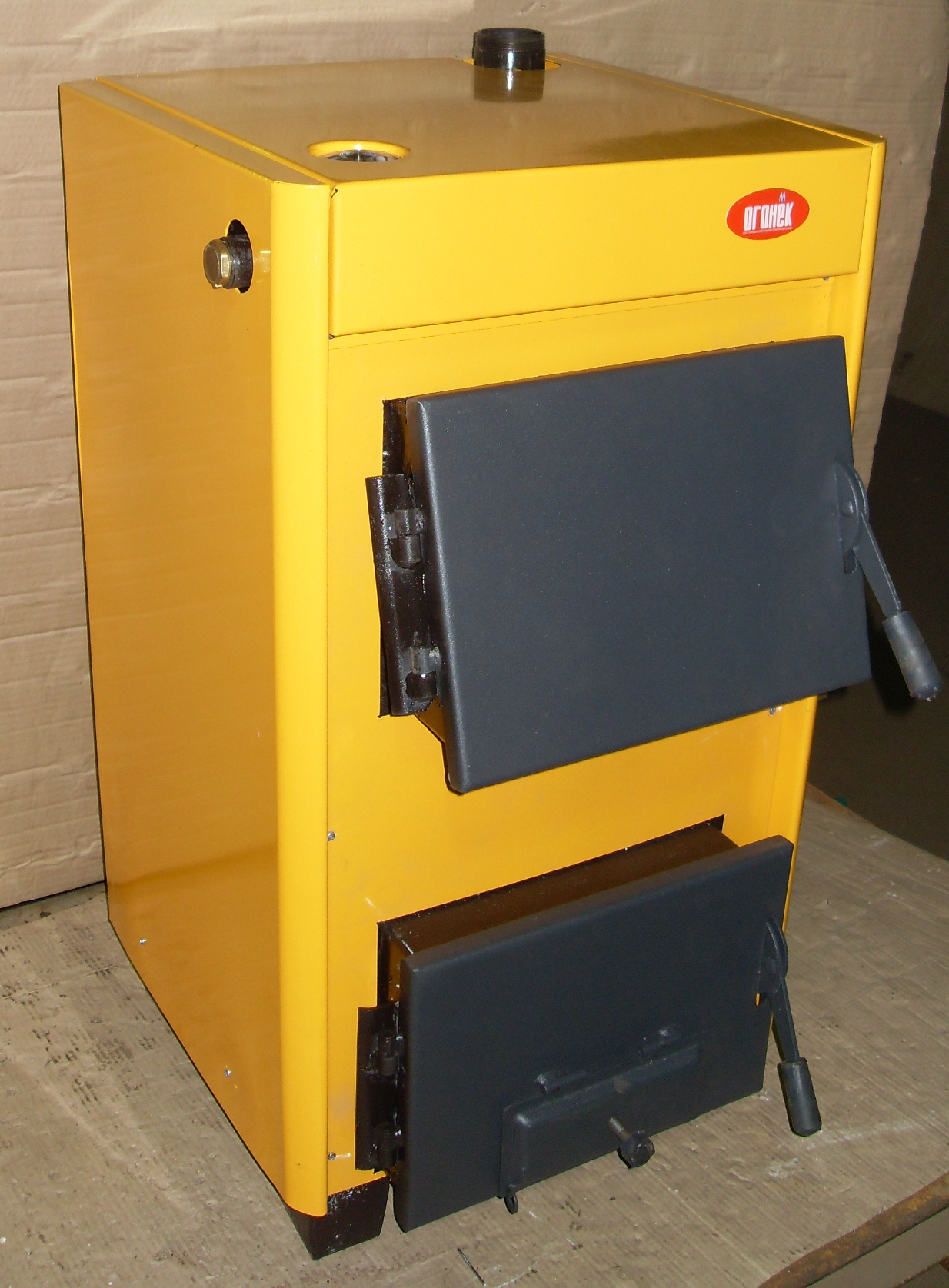
Boiler long burning for energy efficient heating with wood
They replaced large ovens solid fuel boilers, whose energy efficiency has the highest level. There are universal and highly specialized boilers. If we are talking about energy saving, then it is better to use universal devices. This is due to the fact that such a boiler has an enlarged combustion chamber, which makes it possible to extend the operating time of the fuel.
Long-burning boilers can operate continuously for about a day.
Such a boiler cannot be left unattended for a long time, but for houses without centralized communications, wood heating- This is the best and most economical heating method.
In addition to the above heating systems, there are also other heating methods, which involve extracting heat from environment.
Solar system
 This special device, processing solar radiation into other types of energy (thermal, electrical, etc.). The working element of the entire system is the solar collector, which directly processes energy. Using solar power plants as a heating system makes it possible to significantly save on utility costs. The principle of operation is to heat the coolant to 140 °C and distribute the heat through the pipeline system in which the water will be heated.
This special device, processing solar radiation into other types of energy (thermal, electrical, etc.). The working element of the entire system is the solar collector, which directly processes energy. Using solar power plants as a heating system makes it possible to significantly save on utility costs. The principle of operation is to heat the coolant to 140 °C and distribute the heat through the pipeline system in which the water will be heated.
More often solar collectors installed on roofs, where they are most quickly exposed to sun exposure. The main advantage of using solar systems is significant savings in gas and electricity. As for the disadvantages, they are the complexity of installing the system and its high cost. The price of installations primarily depends on their performance. For example, a solar system with a capacity of 300 l/day costs about $1,500. The entire installation will be able to pay for itself in just three years.
Heat pumps
The essence of the operation of these devices is to extract heat from the environment: soil, rivers, lakes, air, groundwater, etc. Heat pumps reduce heating costs by 70%. The advantages of the device are to provide high level comfort with low operating costs. The disadvantages of using these heaters are their high cost and relatively short service life, about 20 years.
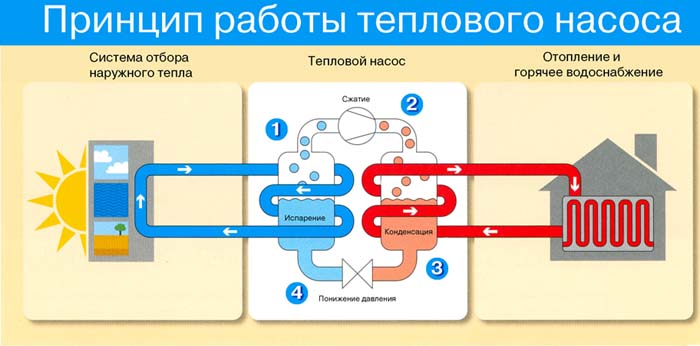
Working principle of a heat pump
